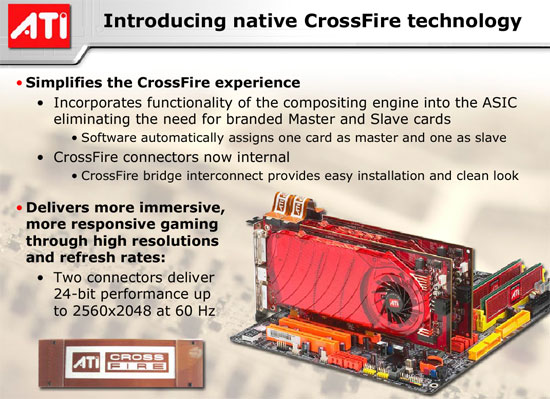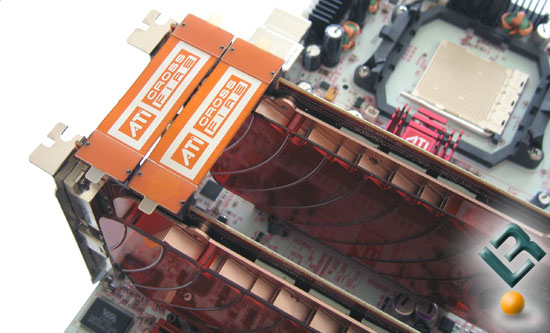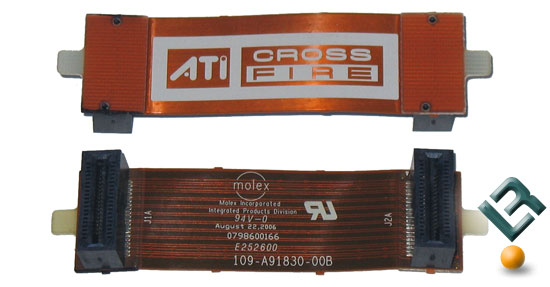ATI Radeon X1950 Pro CrossFire GPU Review
Native CrossFire Technology
For years ATI has been ridiculed for having a dongle and to be honest it’s been a pain for us too as we tend to install and remove CrossFire cards on the test bench quite often. Gone are the annoying small screws and external dongle, in are a pair of internal CrossFire bridges that connect both cards. This also means that there is no longer the need for a master and slave card, which will make purchasing a graphics card from ATI much easier than it has been in the past.

ATI requires the use of both Crossfire Connectors and will include the cables with the purchase of any X1950 Pro series cards. ATI informed Legit Reviews that each cable will supply 12-bit performance meaning both have to be used to reach 24-bit gaming up to 2560×2048 at 60Hz on cards fast enough to run graphics that high. It should also be noted that if ATI wanted to pair more than two graphics cards together these connector locations could also be used to daisy chain cards together. While we don’t expect support for three daisy chained graphics cards any time soon, but it’s something to ponder.

Here is a shot of our ATI Radeon X1950 Pro cards with the pair of CrossFire connectors connected to the graphics cards. The installation of the CrossFire connectors is identical to NVIDIA’s SLI solution as all that needs to be done is push them down for them to be correctly installed.

One interesting thing to note about the CrossFire Connectors are that they were made by Molex Incorporated and dated August 22, 2006, so these have been around for at least a couple months. The take-home message from this page is that ATI has done away with the dongle on the X1950 Pro and their upcoming X1650 XT, so the need for a master and slave card for CrossFire is a thing of the past on these series.
Now that we have covered the most important new feature let’s look at the other noteworthy changes on the X1950 Pro.

Comments are closed.